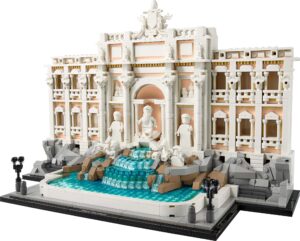Brian Donnelly, widely known by his pseudonym KAWS, has become one of the most influential contemporary artists in the past two decades. Blurring the lines between fine art and popular culture, KAWS has built a reputation for reinterpreting familiar characters and imagery in ways that challenge traditional perspectives on consumerism and modern art. His unique style, marked by cartoon-like figures with crossed-out eyes and vibrant colors, has garnered a global following and cemented his place in the pantheon of modern art.
In 2015, KAWS created “Stay Steady”, a work that encapsulates many of his trademark techniques while delving deeper into themes of identity, nostalgia, and emotional tension. This piece stands as a prime example of how KAWS’ art bridges the gap between high art and popular culture, resonating with both critics and the public.
KAWS: From Street Art to Global Fame
KAWS began his career as a graffiti artist in Jersey City and later moved to New York City, where he became involved in the street art scene. His early works were characterized by subversive interventions on billboards, bus shelters, and phone booths, often replacing traditional advertisements with his own reimagined characters. This rebellious spirit, combined with a deep understanding of popular imagery, laid the foundation for KAWS’ future success.
Key Phases of KAWS’ Career:
1. Early Street Art (1990s): Interventions on advertisements using the moniker KAWS.
2. Vinyl Toys (Late 1990s – 2000s): Connections with toy manufacturers to produce collectible figurines, broadening his appeal to a global audience.
3. Gallery and Museum Exhibitions (2000s – Present): Large-scale sculptures, paintings, and installations exhibited worldwide, elevating KAWS from street artist to international art sensation.
The Creation of “Stay Steady” (2015)
Stay Steady, created in 2015, reflects KAWS’ established visual language while exploring the complex relationship between consumer culture and human emotion. Like much of his work, this piece utilizes iconic imagery but reinterprets it with KAWS’ signature twist—crossed-out eyes, expressive body language, and bold colors that evoke strong emotional responses.
A Detailed Description:
– Medium and Composition: “Stay Steady” is a two-dimensional work, often represented as a screenprint or painting. It features overlapping characters that embody the artist’s unmistakable style.
– Characters and Symbolism: The work prominently includes figures similar to KAWS’ recurring character “Companion”, a figure that blends aspects of cartoon icons like Mickey Mouse with an existential undertone.
– Color Palette: Vibrant yet slightly muted tones dominate the piece, creating a visually stimulating contrast that draws the viewer in.
– Crossed-Out Eyes: A recurring motif in KAWS’ work, symbolizing a blend of weariness, anonymity, and death—a commentary on the superficiality of fame and consumer culture.
Themes and Interpretations
Stay Steady dives into themes that resonate with much of KAWS’ body of work: the tension between consumerism and identity, nostalgia, and the universality of human emotion. The piece invites viewers to reflect on how mass media and commercial imagery shape our understanding of self and collective culture.
Artistic Techniques and Influences
KAWS’ artistic techniques are integral to the impact of Stay Steady. His work combines traditional art methods, such as screen printing, with the bold, graphic lines of street art and the mass appeal of pop culture references.
Techniques in Stay Steady:
– Layering and Overlapping: The overlapping of characters in “Stay Steady” creates a sense of crowdedness and complexity, reflecting the overwhelming nature of modern life.
– Simplicity in Form, Complexity in Theme: While the visual design is straightforward and cartoonish, the themes are layered, prompting viewers to dig deeper into their interpretations.
– Color Theory: The choice of colors in Stay Steady—often vibrant yet muted—reflects a duality that is both eye-catching and subtly unsettling, reinforcing the emotional tension in the piece.
Criticism and Controversy
As with any artist who achieves mainstream success, KAWS has faced criticism. Some art critics argue that his work, including Stay Steady, walks a fine line between commentary and commodification. The frequent use of recognizable, copyrighted characters has also raised questions about originality and appropriation.
Points of Debate:
– Commercial Success vs. Artistic Integrity: Critics often debate whether KAWS’ widespread commercial success diminishes the impact of his social commentary or enhances it by reaching a broader audience.
– Reinterpretation vs. Replication: While many view KAWS’ reinterpretations as innovative, others see them as repetitive and overly reliant on pre-existing imagery.
Stay Steady is more than just a piece in KAWS’ portfolio; it is a microcosm of his impression on the art world. This 2015 work exemplifies how KAWS bridges high art and popular culture, merging nostalgia with critical commentary in a visually engaging way. By repurposing the familiar and infusing it with elements of existential questioning and emotional depth, KAWS invites viewers to reconsider their relationship with consumer culture and their own identity.
As art continues to evolve in the digital age, pieces like “Stay Steady” are likely to retain their relevance. They provoke thought, spark debate, and inspire new generations of artists to explore the boundary between culture and art. KAWS’ work, and “Stay Steady” in particular, stands as a testament to the power of blending mediums and challenging norms in the pursuit of meaningful artistic expression.
No comments yet.








